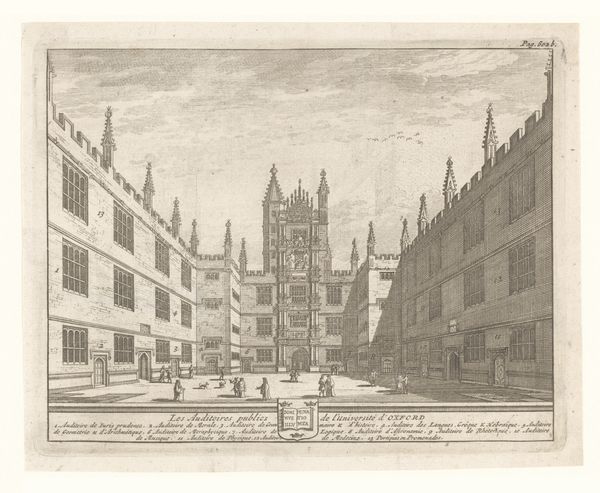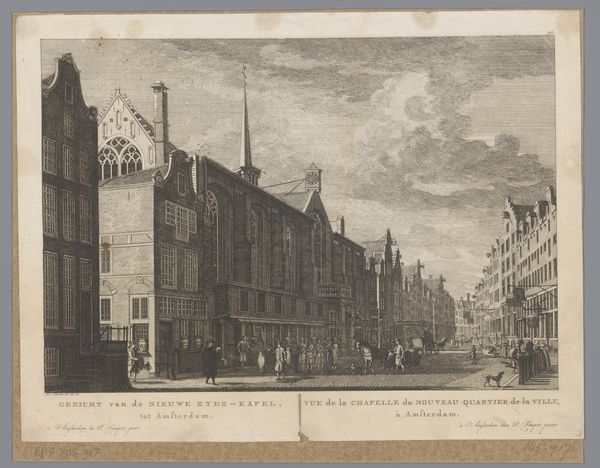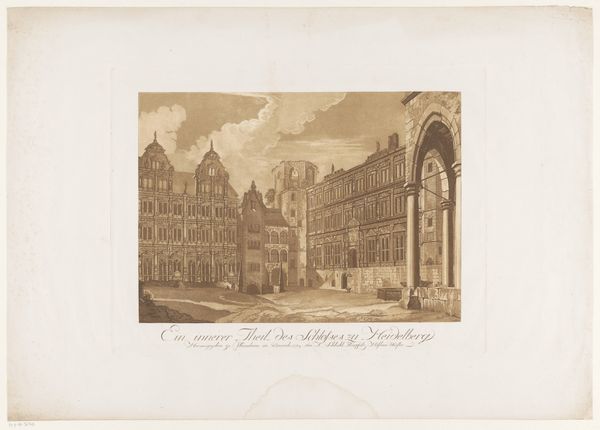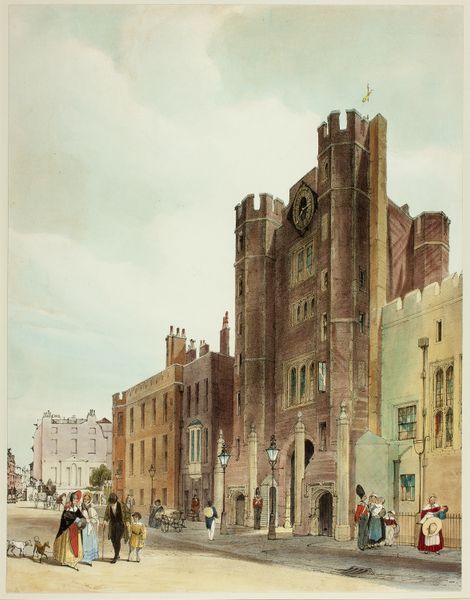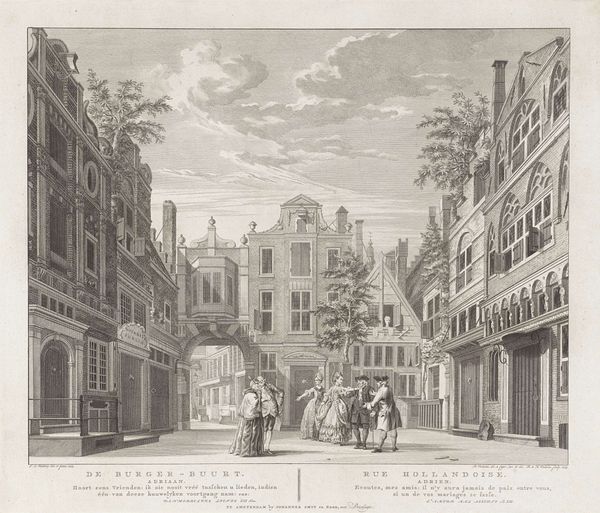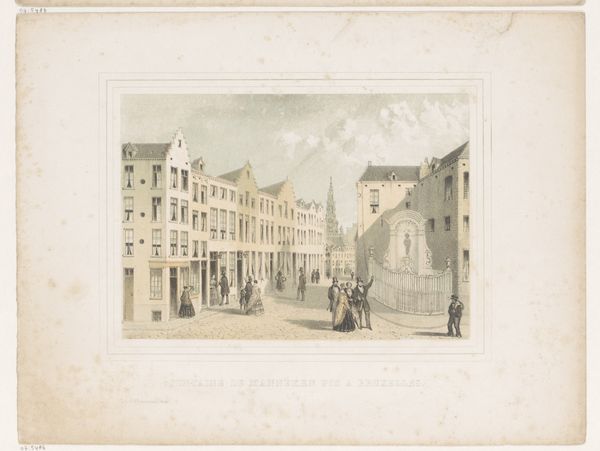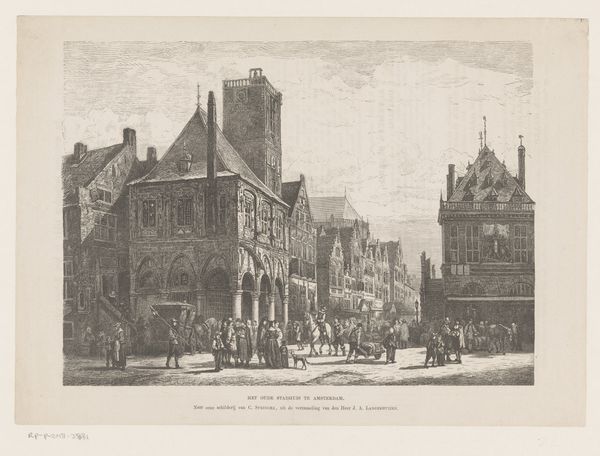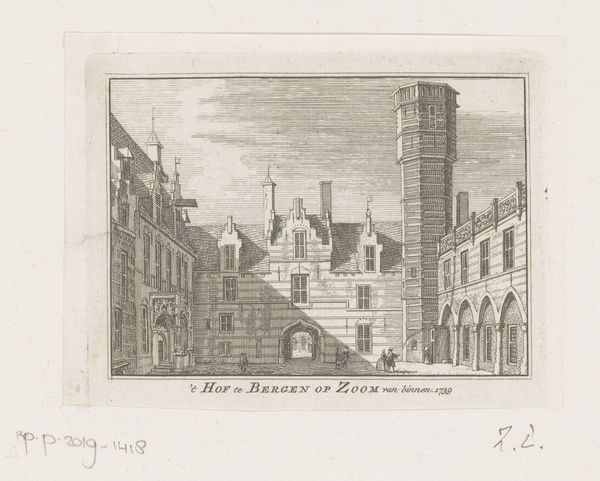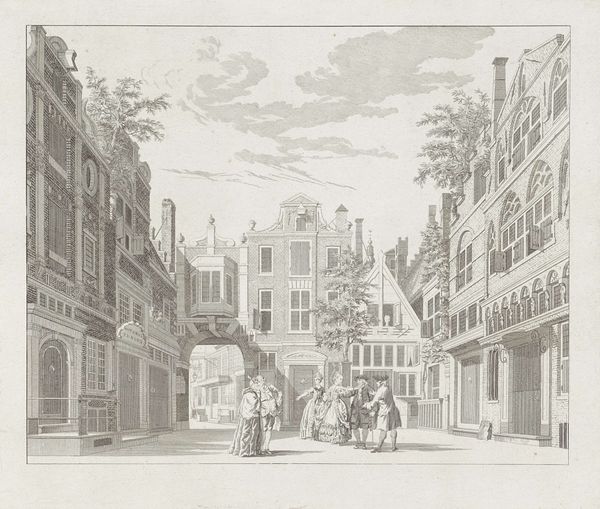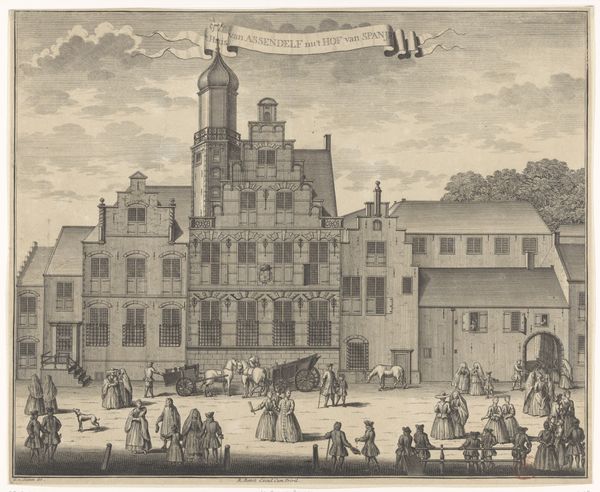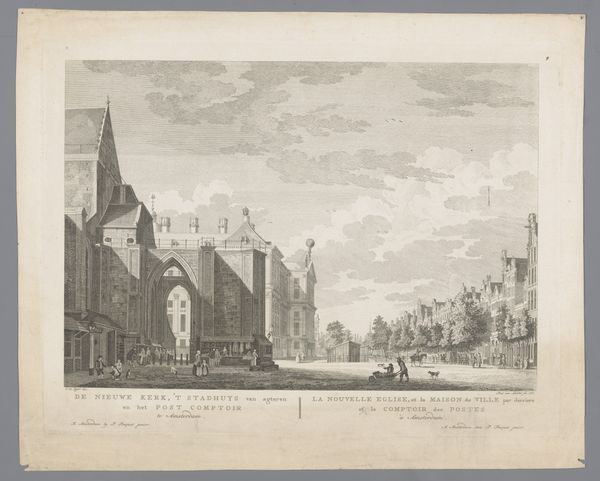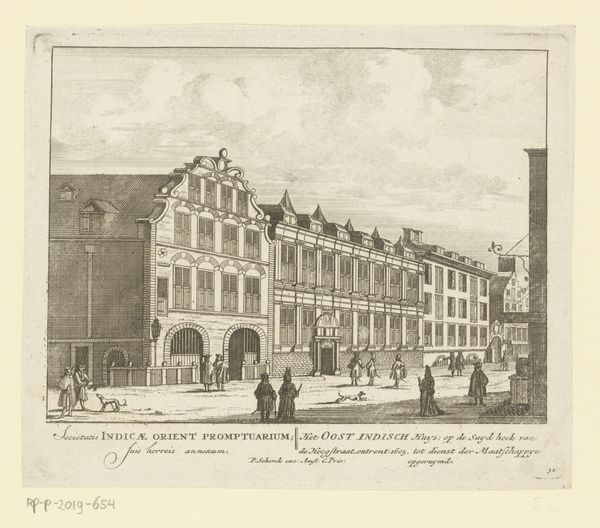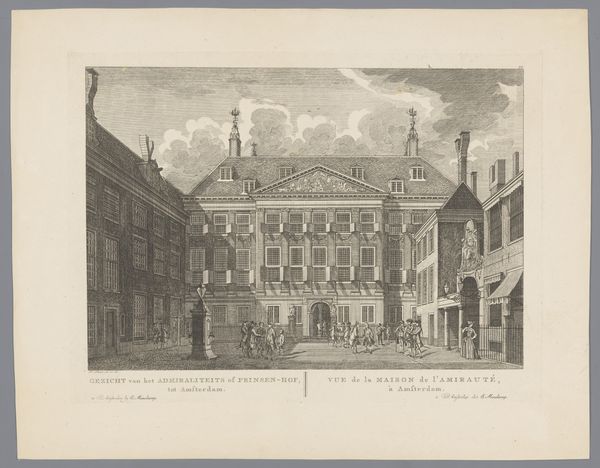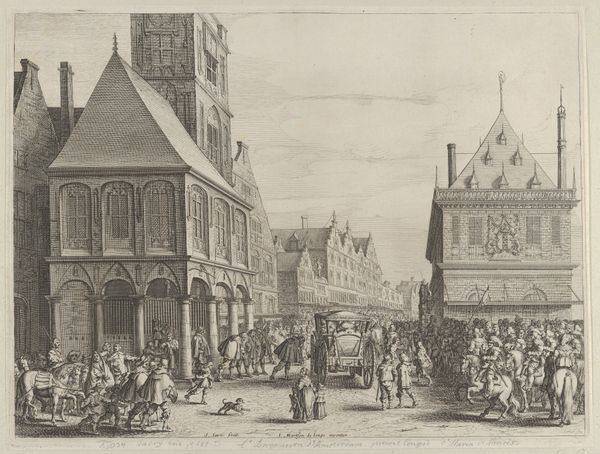
Dimensions: height 185 mm, width 265 mm
Copyright: Rijks Museum: Open Domain
Editor: This is "Binnenplaats van het Paleis op de Koudenberg" – or "Courtyard of the Palace on the Coudenberg" – made sometime between 1823 and 1902 by Johannes Hilverdink. It’s a watercolour illustration and print of a Brussels cityscape, with figures populating the courtyard. It feels like the artist tried to capture a romantic moment, maybe of transition. What symbols stand out to you? Curator: It is interesting you note a 'moment of transition.’ Palaces, and especially their courtyards, were commonly represented in art as stages for ritualistic behaviours or announcements of power. The question I always find myself asking is about the nature of that power, who gets to exert it, and why? Do the figures within this courtyard present themselves to us as dominant in any way, or are they merely players within a set structure? Editor: That's fascinating. I guess I assumed the palace was inherently about power. The building’s imposing scale suggests an established order, but now that you mention it, the people milling about seem more like… ants? Almost inconsequential to the architecture itself. Curator: Precisely! Look at how the light and shadow fall—creating a strong contrast that almost divides the scene. Notice the intricate details given to the architecture, even the suggestion of shadows within windows. Yet the figures lack such specificity. Hilverdink seems less interested in individual stories and more drawn to how people navigate a physical embodiment of power, namely the palace. Do you get a sense of cultural memory embedded in those architectural choices, maybe from earlier royal portraits and prints, where monarchs were presented with similar backdrops? Editor: Yes, I can see that. So, rather than glorifying the palace or the figures within it, the artist might be commenting on how people exist *within* systems, rather than *outside* of them. Curator: Indeed. And perhaps offering us, the viewers, a space to reflect on how such systems resonate – or don't – with our own cultural understanding. Editor: Thanks! I hadn’t thought of it that way before. It really makes you consider the meaning embedded in spaces and symbols.
Comments
No comments
Be the first to comment and join the conversation on the ultimate creative platform.
